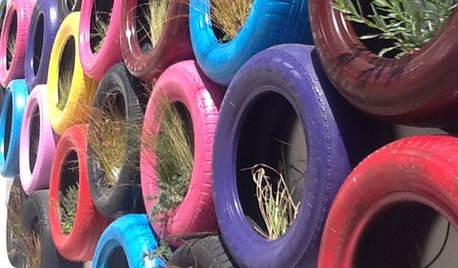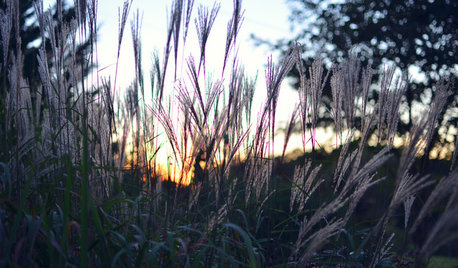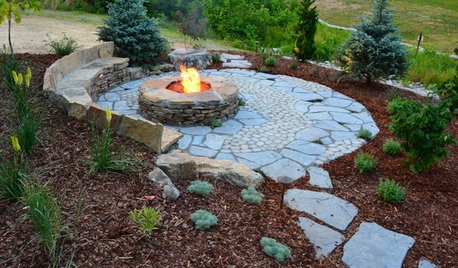Recycle suspicious soil as compost?
kmekaru
17 years ago
Related Stories

GARDENING GUIDESGet on a Composting Kick (Hello, Free Fertilizer!)
Quit shelling out for pricey substitutes that aren’t even as good. Here’s how to give your soil the best while lightening your trash load
Full Story
GARDENING GUIDESGet the Dirt on Your Garden’s Soil
Understand how your soil supports your plants so you can ensure your garden’s success
Full Story
GARDENING GUIDESHow to Pick a Mulch — and Why Your Soil Wants It
There's more to topdressing than shredded wood. Learn about mulch types, costs and design considerations here
Full Story
SALVAGECan We Bounce Some Great Recycled-Rubber Ideas Off You?
No need to bemoan that spare tire. Old rubber is getting a guilt-free second life as flooring, pavers, sinks and even furniture
Full Story
GARDENING GUIDESMid-Atlantic Gardener's November Checklist
Winding down for winter means prepping, potting, piling and picking an indoor solution for daily compost
Full Story0

HOLIDAYS10 Ways Your Christmas Tree Can Live On After the Holidays
Learn how to recycle your Christmas tree and reap benefits for the environment
Full Story
GARDENING GUIDESNew Ways to Think About All That Mulch in the Garden
Before you go making a mountain out of a mulch hill, learn the facts about what your plants and soil really want
Full Story
GARDENING GUIDESGarden Myths to Debunk as You Dig This Fall and Rest Over Winter
Termites hate wood mulch, don’t amend soil for trees, avoid gravel in planters — and more nuggets of garden wisdom
Full Story
GARDENING AND LANDSCAPINGBuild a Raised Bed to Elevate Your Garden
A bounty of homegrown vegetables is easier than you think with a DIY raised garden bed to house just the right mix of soils
Full Story
EDIBLE GARDENSNatural Ways to Get Rid of Weeds in Your Garden
Use these techniques to help prevent the spread of weeds and to learn about your soil
Full StorySponsored
Columbus Design-Build, Kitchen & Bath Remodeling, Historic Renovations
More Discussions







rhizo_1 (North AL) zone 7
jenny_in_se_pa
Related Professionals
Baltimore Landscape Architects & Landscape Designers · Wakefield Landscape Contractors · College Park Landscape Contractors · Estelle Landscape Contractors · Muttontown Landscape Contractors · Nutley Landscape Contractors · Round Lake Landscape Contractors · Bensenville Landscape Contractors · Hemet Solar Energy Systems · Savannah Window Contractors · Marietta Window Contractors · Crofton Fence Contractors · Killeen Fence Contractors · Saginaw Fence Contractors · Santa Ana Fence Contractorsrhizo_1 (North AL) zone 7
kmekaruOriginal Author
gardengal48 (PNW Z8/9)
dangsr2
rhizo_1 (North AL) zone 7
youngd24
justaguy2
organica
bluelytes
tapla (mid-Michigan, USDA z5b-6a)
dangsr_grow
gardengal48 (PNW Z8/9)
tapla (mid-Michigan, USDA z5b-6a)